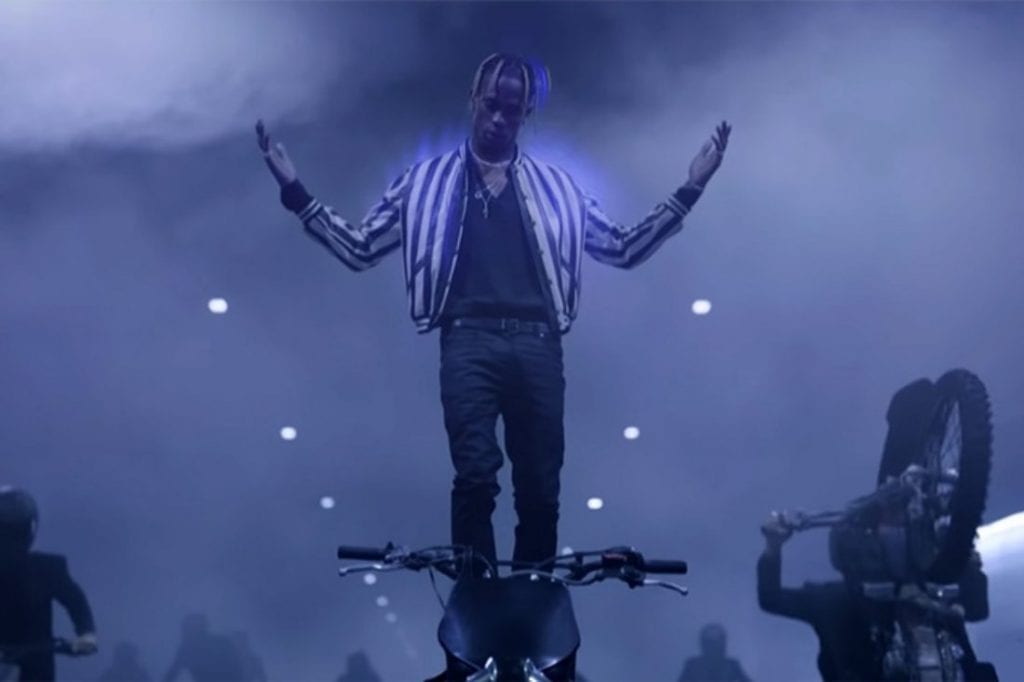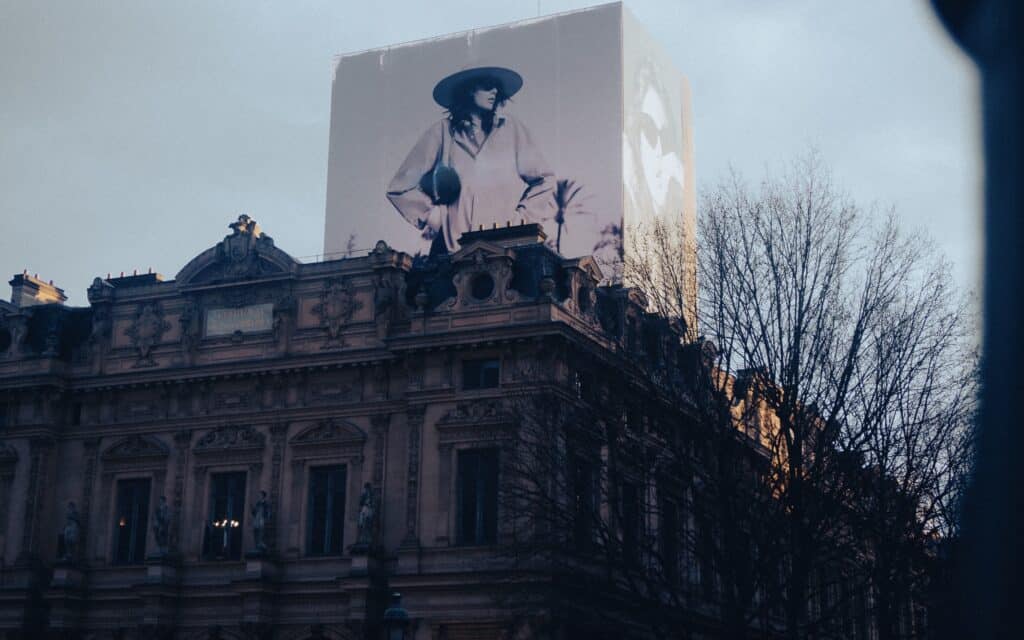Brand ambassadors were once hired to do a few rather routine things: to appear in ad campaigns, attend brand-specific events, and wear the brand’s garments on key red carpets. In recent years, this role has expanded significantly. As revealed in the still-pending lawsuit that New York-based PR Consulting filed against influencer Luka Sabbat, ambassadors may be paid to appear in public in certain accessories (Snapchat’s Spectacles in Sabbat’s case). Or, as indicated in a since-settled suit that was filed against Rita Ora, they may be paid not to wear certain other brands’ products.
Travis Scott, fresh from his Super Bowl half-time stint, is shedding light on an additional canvas for ambassador activities: music videos. It is hardly a coincidence that the rapper is exclusively dressed in Saint Laurent for the duration of his new “Can’t Say” video. As Vogue revealed this week, the Nathalie Canguilhem-directed video “was entirely produced and styled by Saint Laurent.”
The extent of the partnership between Scott – who appears in Saint Laurent’s Spring/Summer 2019 campaign, released in November – and the Paris-based brand is likely not obvious to the uninformed consumer. The video bears no credits and Scott’s wardrobe lacks any ubiquitous YSL branding. Moreover, according to Vogue, the project falls outside of the traditional bounds of such a typical branded partnership; it “represents an unusually close relationship between brand and artist.”
Nonetheless, the video’s specifics should come as little surprise, as brands have clamored – for decades – to partner with musicians. Just as Instagram has proven a hotbed for brand advertising, “Music videos are an amazing advertising platform,” Mark Mulligan, a music analyst for Midia Research, told Marketing Week. There are few other forms of “content that drive the same amount of eyeballs in a day.”
But more than just viewer counts, music videos are hugely attractive to brands, as they enable brands to reach consumers in a less obviously commercial medium in much the same way as in native digital content does.
This type of non-obvious advertising is at the core of what U.S. government entities, such as the Federal Trade Commission (“FTC”), look for when determining when consumer-facing disclosures are needed. Yet, while the FTC has been strict about establishing that social media influencers – the highly-followed figures relied on by brands to boost brand awareness and thus sales – must make it clear to their followers when a post involves any sort of sponsored product (or brand) promotion that would not necessarily be obvious, music videos have largely escaped a government smack down.
The video, on its face, seems as though it might fit neatly into the realm of FTC’s highly-referenced endorsement rules, the ones that require there to be clear and conspicuous” disclosures (i.e., #ad and the like) when a social media post, for instance, is borne from an unexpected “material connection” between an influencer and a brand. There is a connection, after all, between Travis Scott, as a YSL ambassador (who may or may not have been compensated to wear all YSL everything in the video), and the brand, and it is one that consumers might not know about.
But does it make sense for the FTC to a require disclosure in the same way as it does for obvious social media product promotional posts when it is not overtly obvious that Saint Laurent and its clothes are involved in the video at all?
Maybe not. The analysis under the FTC rule is certainly not straightforward, as the text-book type of endorsement – à la the “I love this dress” or “this is my favorite moisturizer” types of messages put forth by Instagram influencers – is not what is going on here. Instead, the presence of Saint Laurent wares is maybe better described as a product placement, which, unlike an endorsement, comes with “no objective claims about the various branded products,” and no #ad-style disclosures, at least not from an FTC standpoint.
That is because the FTC has held the “mere showing products or brands in third-party entertainment content” does not amount to endorsement and require disclosure, only the active endorsement of that product or brand does.
Such language suggests that Travis Scott wearing all Saint Laurent in his video does not amount to an endorsement (I would argue otherwise), and that he would have to give Saint Laurent a shout out or directly speak to the brand/its garments in some way in the video in order to give rise to a potential need for disclosure.
With all of this in mind, an argument could potentially be made that this video goes far beyond the bounds of an innocuous example of product placement and is, instead, more accurately described as a “disguised commercial” given the relationship between Scott and YSL, and thus, is in need of disclosure.
But … even if an FTC claim is not at play here, the Federal Communications Commission (“FCC”) – a separate government entity, one that regulates interstate communications by radio, television, wire, satellite, and cable – has rules of its own, which require broadcasters to disclose to their viewers if something has been aired in exchange for money, services or other valuable consideration.
Traditionally, such a rule governed payola – the radio pay-for-play that we discussed here – but it extends, at least in theory to sponsored elements of television shows and … televised music videos. With the FCC’s rule in mind, if the video was part of Scott’s ad campaign/ambassador deal with Saint Laurent (and there is not definite answer that it was), then disclosure would be required, right?
Well, maybe not. As Jennifer Furjawa argued in her article, The FCC’s Sponsorship Identification Rules: Ineffective Regulation of Embedded Advertising in Today’s Media Marketplace, “Neither the FCC’s sponsorship identification rules nor the Communications Act [of 1934] extends regulation to the growing markets beyond … broadcast and cable television.” As such, if the music video is available exclusively via non-broadcast (i.e., non-terrestrial) television and/or cable television, such as on Vimeo, Youtube or Apple Music, Scott and YSL just might be in the clear, since as of now, the FCC does not regulate digitally-native content.
This is all to say, the law in this area is complicated (and likely to evolve in light of the diminishing power of the FCC, in particular, given the marked rise of non-broadcast media), and so, too, the legality of Travis Scott’s #ad-less new music video.














